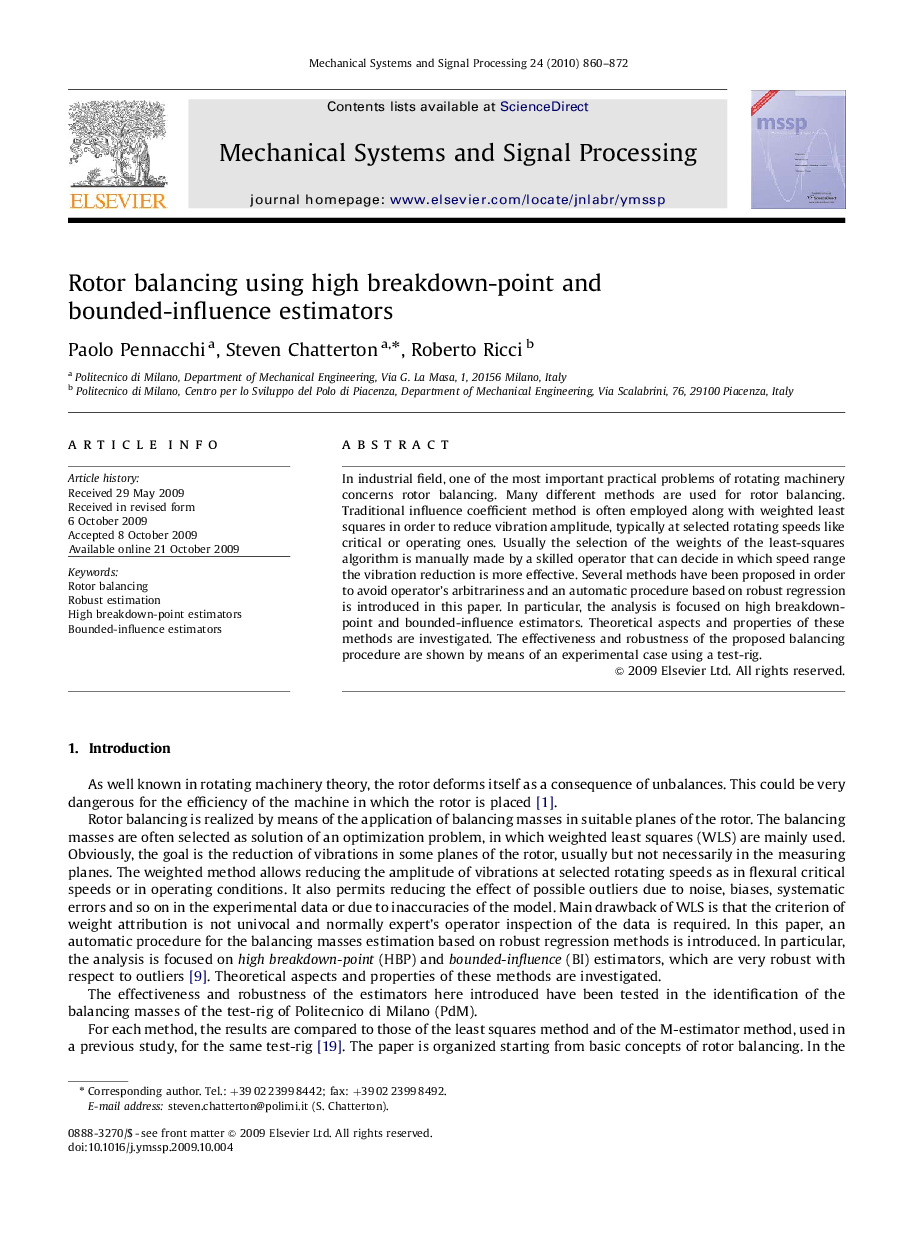| Article ID | Journal | Published Year | Pages | File Type |
|---|---|---|---|---|
| 565670 | Mechanical Systems and Signal Processing | 2010 | 13 Pages |
In industrial field, one of the most important practical problems of rotating machinery concerns rotor balancing. Many different methods are used for rotor balancing. Traditional influence coefficient method is often employed along with weighted least squares in order to reduce vibration amplitude, typically at selected rotating speeds like critical or operating ones. Usually the selection of the weights of the least-squares algorithm is manually made by a skilled operator that can decide in which speed range the vibration reduction is more effective. Several methods have been proposed in order to avoid operator's arbitrariness and an automatic procedure based on robust regression is introduced in this paper. In particular, the analysis is focused on high breakdown-point and bounded-influence estimators. Theoretical aspects and properties of these methods are investigated. The effectiveness and robustness of the proposed balancing procedure are shown by means of an experimental case using a test-rig.
